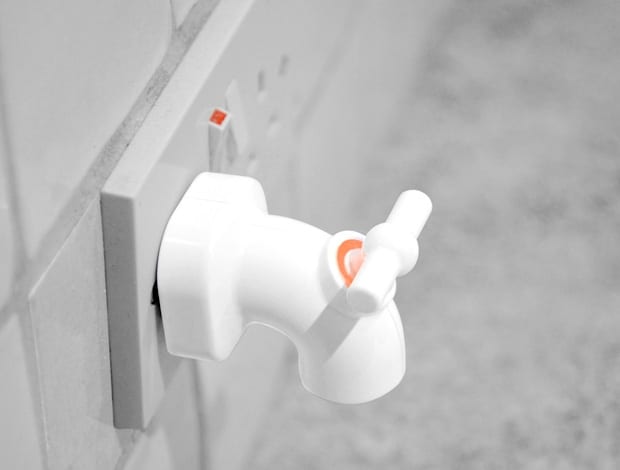 Insert your USB cable into the spout and turn the plastic handle to start or stop charging||
Insert your USB cable into the spout and turn the plastic handle to start or stop charging||
There will always be a market for funny-looking novelty products, and that includes the Power Tap USB charger, a cheeky character that charges your smartphone at the turn of a plastic tap. Despite stirring feelings of nostalgia in this reviewer, he thinks it’s “design pollution”
The design world can be broken into two distinct tribes – the extroverts and the introverts, or, to borrow a phrase from Michael Frayn’s famous 1963 essay on the Festival of Britain, the Carnivores and the Herbivores. Arguably the godfather of the former is Philippe Starck, while in recent times the opposing camp’s most eloquent voice has been Jasper Morrison.
One is happy to design a highly sculptural lemon squeezer that he admits functions inadequately but acts as a talking point, the other rails at the excesses of a bloated industry complaining that “design, which used to be almost unknown as a profession, has become a major source of pollution,” adding for good measure that “its historic and idealistic purpose, to serve industry and the happy consuming masses at the same time, of conceiving things easier to make and better to live with, seems to have been sidetracked.” Instead of constantly attempting to attract attention, argues the head Herbivore, design should strive to create the ‘super normal’, by finding beauty and function in the everyday.
One shudders to think what Morrison would make of the Power Tap USB charger. “No matter how smart they look, regular plugs are dead boring and an outright eyesore. So stop settling for such dullard wall fixtures and plug in this tactile piece of electrical plumbing,”exclaims a press release so excitable you could almost put a lead on it and take it for a walk. “[It’s] made from rugged ABS plastic and styled like a regular household tap; just insert your USB device, give it a twist and unleash a stream of power from the spout.”
Now, there are genuine problems with the traditional phone charger – particularly if you spend a lot of your life travelling – which have recently been addressed intelligently by the MU folding plug. As its designer Min-Kyu Choi has pointed out, while laptops and mobile phones are getting anorexically slim, the plug that charges them has stayed the same size, taking up vital bag space and, on occasion, damaging other contents. It is a product that has been overlooked for too long and deserves to be rethought.
However, the Power Tap isn’t concerned with such things. It comes from the same school as the Starck lemon squeezer. This is the Jive Bunny of the product design world, concerned with novelty above all else. Watch as you turn the faucet and the red glow turns blue as the power surges through the tap. It’s a concept that my nine-year-old daughter found amusing for a little under five minutes.
The PowerTap contrives to take up more space than the traditional plug – indeed, if your electrical socket is at skirting-board level, I would suggest that it protrudes so far from the wall that it could become a genuine hazard. Likewise, stick it into an extension cable and it will just get in the way.
So does it possess any redeeming features? Well, I have to confess that I found it ever-so-slightly nostalgic. The Power Tap is precisely the type of product that would have featured in the old Innovations catalogue that used to plop on the doormat just before Christmas when I was a child and was full of magical but usually entirely pointless bits of technology that promised much but delivered very little. Costing £14.99 from Firebox.com, it’s exactly the kind of thing that my parents would have stuffed in my Christmas stocking, next to the Terry’s Chocolate Orange and Shoot! annual.
Although there’s a danger of sounding humourless, on balance Morrison is correct when he says that design is responsible for polluting our environment. But the truth of the matter is, there is a market for quirky lemon squeezers and funny-looking USB chargers, whether we like it or not.




















